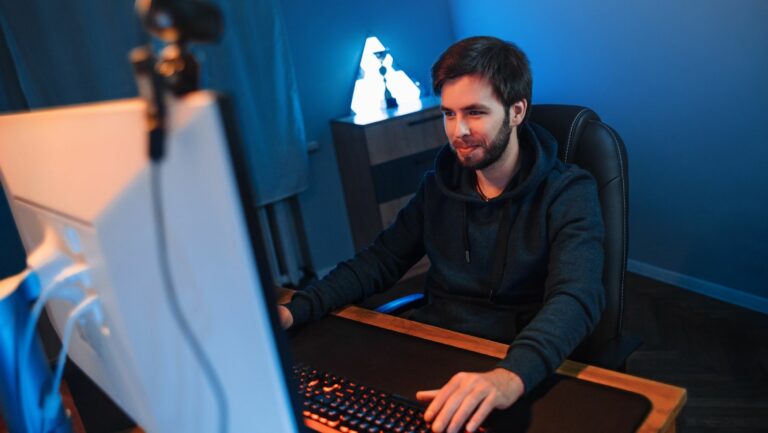Streaming gets high accessibility marks today. That is a fact. Yet, building a good setup can feel overwhelming, particularly when working with a tight budget. The good news? You don’t need expensive gear to get started. In 2025, it’s easier than ever to build a PC streaming rig under $1,000 that performs well and looks professional. With the right method, you can deliver a quality stream that feels premium without draining your wallet.
Choosing Your Core Components Wisely
Start by focusing on the parts that hold the most stress: your processor, graphics card, and RAM. These will affect both your gameplay and your stream’s stability. An AMD Ryzen 5 or Intel Core i5 CPU is affordable and offers more than enough power for streaming most titles. For the GPU, consider a used NVIDIA GTX 1660 Super or AMD RX 6600—they handle 1080p gaming well while staying within budget.
16GB of RAM is the sweet spot. It’s plenty for multitasking and won’t hold you back. Pair it with a 512GB SSD for fast boot times and enough storage for your OS, games, and streaming software. You don’t need top-tier parts in every category, but you do need reliable ones.
In Australia, some gamers find value in cashback-friendly platforms to manage costs creatively. A few even use small bonus returns from Trusted Australian Ezeewallet Casinos to help balance fun spending with gear upgrades. It’s not a strategy for everyone, but for budget-conscious buyers, it’s an interesting way to supplement hobby expenses.
Picking the Right Peripherals Without Overspending
Microphones and cameras can be expensive, but there are excellent budget options that don’t compromise on quality. The Fifine K669 or Maono AU-PM421 mics provide solid sound clarity for under $60. These are plug-and-play devices that don’t need an audio interface, perfect for beginner streamers.
A 1080p webcam like the Logitech C920 or newer Nexigo models delivers crisp video ideal for Twitch or YouTube. Add a budget ring light or soft LED panel, and your stream will look far more professional without expensive gear.
You can get by with one monitor at first. Choose something 1080p with at least a 75Hz refresh rate. Add a comfortable headset with a noise-canceling mic to reduce audio distractions and keep your setup clean.
Software and Stream Layout Essentials
For software, stick with OBS Studio. It’s free, open-source, and packed with features. With it, you can manage scenes, sources, alerts, and more – all while keeping your CPU usage low. Add free overlays from StreamElements or browse open layout libraries to give your stream a personal touch.
Start simple. A clean layout with clear alerts and webcam framing is more valuable than flashy visuals you don’t need yet. Performance and stability are what your viewers will notice most.
Lighting and Background Tips for a Professional Look
Lighting is one of the most overlooked details in beginner setups. A small investment in a ring light or softbox changes everything. It helps your camera perform better and gives your stream a clean, polished look.
Keep your background minimal or tidy. Use a curtain, bookshelf, or neutral wall, whatever feels consistent with your brand. If you stream in a shared space, consider a retractable backdrop or webcam blur settings to keep focus on you.
Saving Smarter and Spending Gradually
You don’t have to build the perfect setup overnight. Start with core essentials and upgrade slowly. Choose a case and motherboard that leave room to grow so you can add storage and RAM or swap your GPU later.
Many streamers offset gear costs with cashback apps, loyalty bonuses, or budget rewards. Some Australians even explore Trusted Australian Ezeewallet Casinos during off-time gaming, using modest bonuses as part of a smart budgeting plan. It’s not a primary funding source, but for disciplined users, it adds flexibility.

Creating a Brand That Grows with You
Your setup matters, but your personality matters more. Create a consistent look and tone from the start, even if your visuals are simple. Think about your username, your logo, your channel colors, and how you talk on stream. All of that helps define your identity.
You can evolve your branding as you grow, but having a basic foundation gives your stream cohesion. Add custom overlays or sound alerts once you know what fits your vibe. Don’t overcomplicate things early on – keep it real, and keep it you.
Streaming on Wi-Fi vs Ethernet
A stable internet connection is crucial for streaming. Wi-Fi is convenient, but it can lead to dropped frames or unstable uploads, especially if others are using the network. If you’re serious about quality, use a wired Ethernet connection whenever possible.
A simple Ethernet cable connected directly to your router can make a huge difference. Your bitrate will stay more consistent, your stream will run smoother, and your viewers won’t have to deal with sudden lags or freezes.
If you must use Wi-Fi, place your router nearby and avoid high-bandwidth competition in your household. Test your connection before going live to avoid unpleasant surprises.
Keeping Your Setup Cool and Quiet
Streaming and gaming at the same time put real stress on your system. That’s why airflow and noise control matter. Choose a case with decent ventilation, and install one or two extra fans if needed. A system that stays cool will perform better and last longer.
Avoid overly loud fans or bulky heatsinks unless necessary. You want your mic to pick up your voice, not your PC’s background hum. Check user reviews for parts known for quiet performance, especially power supplies and CPU coolers.
It’s easy to overlook thermals when buying on a budget, but this is one of those details that pay off in the long run.
When to Upgrade and What Comes Next
After you’ve streamed for a while, you’ll learn what needs improving. Maybe your webcam isn’t great in low light. Maybe your CPU spikes when streaming a certain game. Use that feedback to guide your next purchases.
Upgrade one thing at a time based on what affects quality most. Your viewers will appreciate a cleaner stream more than fancy RGB. As your audience grows, so will your income, and you can reinvest slowly into a setup that evolves with you.
Stream With What You Have And Build as You Grow
A tight budget doesn’t mean you have to compromise on quality. With a thoughtful build, smart shopping, and patience, you can create a PC streaming setup under $1,000 that looks good, runs smoothly, and gives you room to grow. Stick to essentials, avoid the hype, and focus on delivering great content. The rest will come with time.




